If you want to explore the history of Monaca through the ages there are a number of historical monuments in Monaco including the time-honored buildings, palaces, and parks where you can learn about the glorious past of Monaca. The presence of these monuments of Monaco will take you on a walk through the country’s rich history. If you are willing to have in-depth historical information about Monaca, we recommend that you take a wonderful guided tour to cover the major historical attractions. Also, check the opening and closing time for each so that you can organize your time. Make sure that you go through the complete list of historical sites in Monaco for a great trip:
List of Monuments in Monaca
1. Prince’s Palace or Palais du Prince
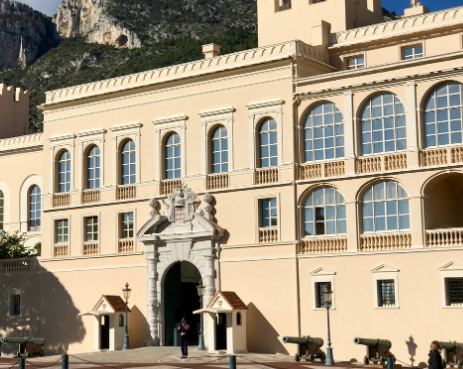
Prince’s Palace
Situated in Monaco’s elevated old town known as ‘The Rock‘, the Prince’s Palace is where the royal family resides. The family has been reigning the principality for more than 700 years and the current palace was adapted from the original fortress that stood atop this advantageous headland since the 1200s. The State Apartments of this famous monument in Monaco is a private residence but is open to the public at certain times of the year. (Check the official website for opening times.) Visitors can see the sumptuous Italianate gallery adorned with 16th- and 17th-century frescoes; the gilded “Blue Room” featuring a resplendent decor of blue and gold; the wood-paneled Mazarin Room; and the Empire-style Throne Room, which has an impressive Renaissance fireplace. Be sure to admire the 17th-century Palatine Chapel and the Main Courtyard, with its monumental 17th-century Carrara marble double staircase. In July and August on some Sundays and Thursdays, the Monte-Carlo Philharmonic Orchestra performs classical music concerts in the main courtyard. Another tradition of the Sovereign House, the Changing of the Guard takes place every day at 11.55 am in front of the palace. This ceremony called the Compagnie des Carabiniers du Prince is conducted by the highly trained Palace Guards and accompanied by the Orchestre des Carabiniers du Prince military brass band musicians.
Address: Place du Palais, Monaco-Ville 98015 Monaco.
Read More: Monuments in Benin
2. Monte-Carlo Casino
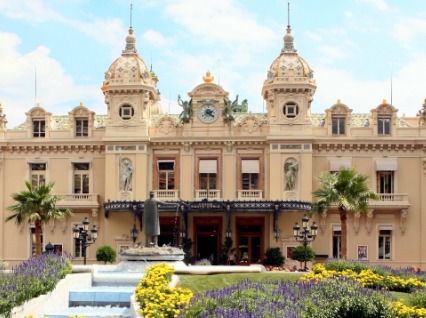
Monte-Carlo Casino
It was built by Charles Garnier, the architect of the Paris Opera House in 1893. Surrounded with 28 Ionic columns made of onyx, its marble-paved “atrium” gives access to the Opera Hall which is entirely decorated in red and gold, with sculptures and bas-relief. Its stage has been the setting for exceptional ballets, international operatic creations, and prestigious concerts for more than a century. Before the late 1870s, it was built in more of a seaside style, with the facade being that of a coastal establishment rather than the epitome of luxury. In 1878-79, the casino building was transformed and expanded – and again in the 1880s – to be similar to what we see today. With stained glass windows, sculptures, and allegorical paintings its series of “Gaming Rooms” are marvelously decorated. From 2 pm until the last table closes, this popular monument in Monaco is open to players. Restricted access only for 18+ and proof of identity required.
Address: Monte-Carlo Casino, Place du Casino, Monaco
3. Saint Nicholas Cathedral
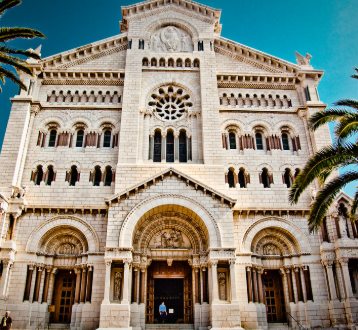
Saint Nicholas Cathedral
Monaco Cathedral is the resting place of Grace Kelly and Prince Rainier, as well as numerous members of the Grimaldi family. The cathedral was built over several decades (1875-1903) and consecrated in 1911. Built-in 1252, it was built on the site of the first parish church in Monaco. It was turned into a cathedral in the 19th century, and the old building was demolished in 1874. In 1875, the first stone of the new cathedral was set with works finishing in 1903, although it was not consecrated until 1911. This religious monument in Monaco was designed according to a Roman-Byzantine style. Inside, there are chapels dedicated to the Saint Sacrement, Sainte Devote, and Saint Roman. The 16th-century altarpiece of Saint Nicolas was produced by the famous Niçois painter Louis Bréa and comes from the old church. From Jean II Grimaldi, who died in 1505, to Grace Kelly, decreased in 1982, and Rainier III, who passed away in 2005, most of the princely family is buried in the cathedral. The cathedral is equally as impressive a landmark within as it is externally.
Address: Saint Nicholas Cathedral, 4 Rue Colonel Bellando de Castro, Monaco.
Read more: Reasons to Visit Amsterdam
4. Fort Antoine

Fort Antoine
By the Prince of Monaco, this fort was built in the 18th century with a beautiful promontory position overlooking the bay. Much of this old monument in Monaco was destroyed in 1944 in the Second World War but was reconstructed at the demand of Prince Rainier III and is now a gorgeous open-air theatre. During the Spanish War of Succession (1700-1715) when it was feared that Monaco would be invaded by the British and Spanish and it is the main reason to build this place. The invasion never took place, and the fortress was abandoned soon after it was built. After the fall of France in 1940, Louis II, the Prince of Monaco, was able to maintain their neutrality, but in 1942 Italian forces occupied the principality based on some dubious legal claims. The Italians garrisoned Fort Antoine and during the war, the tunnels beneath the fortress were used as air-raid shelters. It is now an open-air theatre and, during the summer months, shows are hosted in this gorgeous setting.
Address: Avenue de la Quarantaine, 98000 Monaco.
5. Sainte-Dévote Church
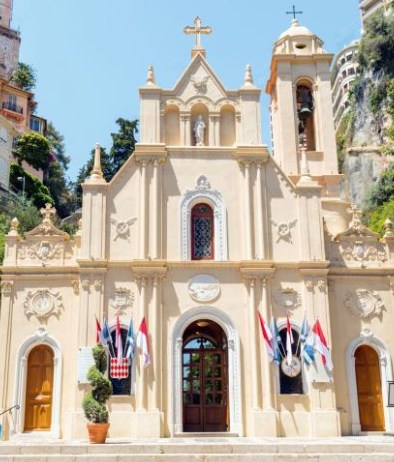
Sainte-Dévote Church
Situated in the Valley of the Gaumates and dedicated to Saint Devota, the patron saint of Monaco, the Sainte-Dévote Chapelle really is a slice of solitude away from all the grandeur. It may have been built as early as 1070. In Corsica, in the very early 4th century the Roman governor, Diocletian, ordered the great persecution of the Christians. Corsica was a Roman province at that time. There is an interesting story behind this ancient monument in Monaco. It is said that a young Christian, who also was a Devote, was arrested, imprisoned and tortured. Without denying her faith she died. The governor of the province ordered for her body to be burnt after her death, but the Christians saved her body and placed it on a boat bound for Africa. They used to believe she would receive a proper Christian burial. When a storm struck it is said that a white dove flew from her mouth and guided the boat to Monaco. This church is built on the site where a storm-struck ship carrying Dévote’s body docked in Monaco.
Address: 1 Ruelle Sainte-Dévote, 98000 Monaco.
Read More: Monuments in Bolivia
6. Chapel of Mercy
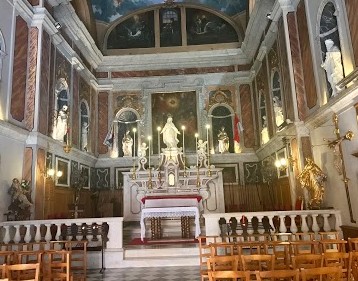
Chapel of Mercy
Situated on the Rue Basse in Monaco-Ville district, the Chapel of Mercy is a Roman Catholic Church. The house of prayer was inherent in 1639 and filled in as the seat of the Brotherhood of the Black Penitents. Honoré II, Prince of Monaco filled in as the fellowship’s first earlier. The inside adornment highlights a wooden model by François Joseph Bosio. For four centuries on Easter Friday, this chapel was the starting point for the traditional procession. It was abolished in 1870 and has been resumed in the last few years. Sculptor to Emperor Napoleon 1st Monegasque, François-Joseph Bosio sculpted a wooden Christ which is placed in this beautiful monument in Monaco. The Chapel of mercy was visited by locals who believed in the power of mercy and it has been home to some famous parishes.
Address: Chapel of Mercy, Place de la Visitation, Monaco
7. Hercules Port
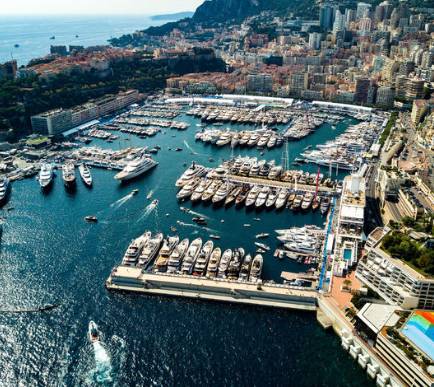
Hercules Port
The only natural deep-water port in Monaco is Hercules harbor. The port has been an important part of Monaco’s history, providing the principality with an important mark on maritime trading routes and a strategic naval base. The modern port was completed in 1926, and in the 1970s underwent further improvements. By the Greeks and Romans, this iconic monument in Monaco was used as a trading port but had the disadvantage of being poorly sheltered from the easterly winds. These studies were to lead to the construction of a colossal structure weighing 160,000 tonnes and 352 meters in length at the foot of the Rock of Gibraltar. In order to conserve the marine fauna and flora, it has the unique feature of being semi-floating. It was towed to the principality and moored at the foot of the rock. It was completed by a lee breakwater 145 meters in length. This redevelopment enabled large and luxurious pleasure craft to be welcomed in response to the development of ocean cruising.
Address: Hercules Port, Monaco
Read more: Famous Haunted Places in Amsterdam
8. Oceanographic Museum
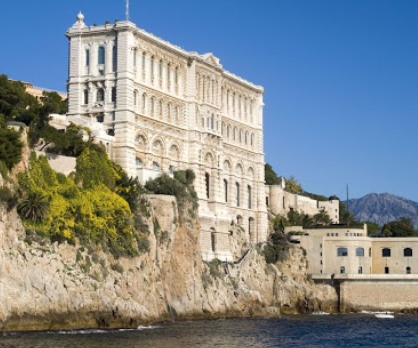
Oceanographic Museum
The museum of marine sciences is a very impressive building, especially when viewed from a profile setting. With spectacular views out onto the Mediterranean Sea, this national monument in Monaco sits right on the edge of the Monaco cliffs. This historical landmark took 11 years to build and is an example of Baroque Revival architecture. It was built and designed 100 years ago as a palace dedicated entirely to science. The museum organizes temporary exhibitions, educational activities, guided tours, and special events, and regularly commissions site-specific artworks to renowned contemporary artists, such as Damien Hirst and Marc Quinn. A panoramic restaurant and a shop also included in the building of the Oceanographic Museum of Monaco.
Address: Oceanographic Museum, Avenue Saint-Martin, Monaco
So far we have discussed the best monuments in Monaco, which contains the proper information regarding all the most visited monuments in Monaco. I hope you might have loved reading this article and if you love to know more about Monaca then kindly head to our other articles as well which will help you to get knowledge about.
The post Most Visited Monuments in Monaco l Famous Monuments in Monaco appeared first on World Tour & Travel Guide, Get Travel Tips, Information, Discover Travel Destination | Adequate Travel.